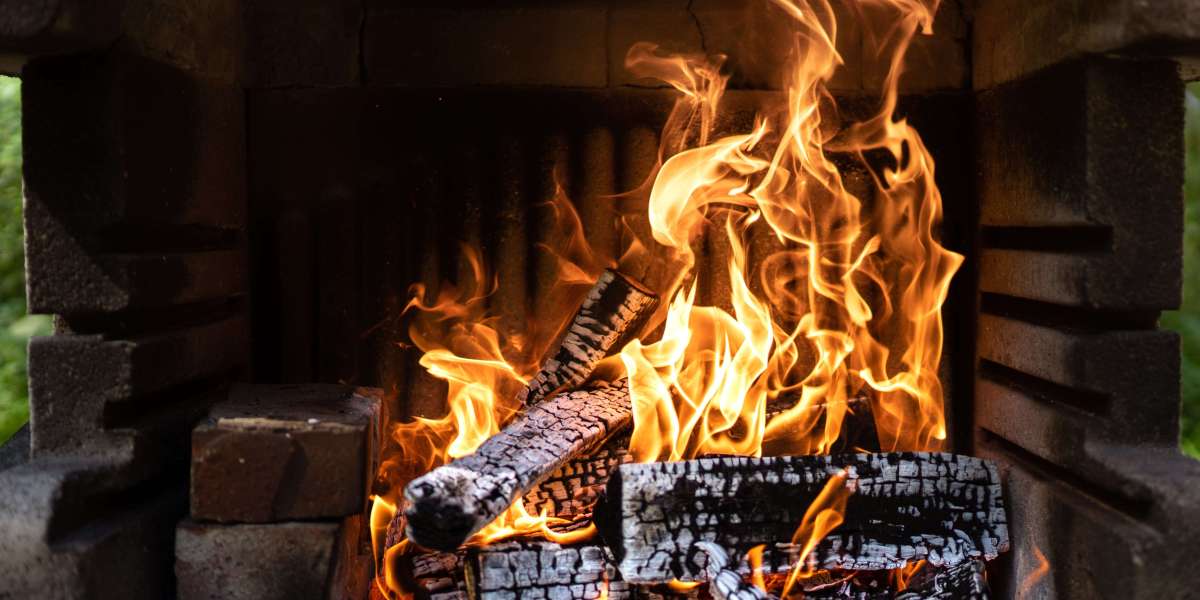 If you have an electric or wood burning fireplace, the right surround can really make the room. Finding a fireplace surround that matches your interior style is not always easy.
If you have an electric or wood burning fireplace, the right surround can really make the room. Finding a fireplace surround that matches your interior style is not always easy.Brick is one alternative that can be incorporated into contemporary-, rustic- or farmhouse-style homes. It's also a great option for homeowners on a tight budget, as it is easily painted.
Wood
A fireplace surround made of wood is an important piece of furniture since it serves as a focal point to the room and breaks up walls that would otherwise be blank. A wood surround can also make it easier to hang holiday decor. Pine surrounds can be used to hang garlands and wreaths and can be easily removed after the holiday season is over.
When selecting a fireplace surround, it's important to choose one that complements the style of your home. Wooden surrounds can be purchased in a range of finishes and styles to fit in with any decor, from traditional to contemporary. There are a range of options for dimensions and design. Some fireplace surrounds are flat and set flush against the wall. Others are designed to be mantels that are set away from the wall.
The most popular type of wood fireplace surround is oak and it is known for being both beautiful and durable. It is a hard solid wood that is resistant to warping, swelling, and shrinkage. It is also hygroscopic, which means it absorbs moisture in the air. This protects against fungus attack and damage.
Oak veneers and pine are also available as fireplace surrounds. Both of these are fairly inexpensive and are typically sold as complete surrounds, with the hearth and back panel included. They can be purchased at numerous DIY and home stores. Online retailers such as Pureglow offer them often.
When buying a wood fireplace surround, it is crucial to remember that it must be located a certain distance away from the firebox opening to ensure safety. This distance is determined by the clearance for fire hazards requirements that are based upon codes and regulations for your area of residence.
Stone
A fireplace with a stone surround can provide a rustic and warm look to your home. It's not just a way to blend in with the style of your interior but it can also improve the value of your home. Certain studies have proven that a fireplace with a good design can help you sell your house faster and at more money.
There are many kinds of stone you can use for your fireplace's surround, such as marble and granite. Both are durable and can last for a long amount of time with little maintenance. Additionally they are generally less expensive than wood.
While natural stone may be a bit more expensive than other materials, it comes with the highest quality of beauty and durability that makes it worth the investment. You can pick from a wide range of colors, patterns and textures to create the perfect look for your space. You can also choose to have your fireplace's surround made from natural stone, which makes it an exclusive design element.
Stone surrounds are perfect for both gas and wood burning fireplaces. Stone surrounds are able to withstand extreme temperatures and aren't warped or cracked when exposed to extreme heat. They are also resistant to scratches and stains. Granite, for instance, is one of the most popular and cost-effective alternatives for a fireplace surround. It is non-porous, scratch resistant and resistant to chemicals which could otherwise harm other surfaces.
One disadvantage of the fireplace surround made of stone is that it can be difficult to clean. The crevices and joints made of concrete between the stones can hold household dirt. Cleaning your fireplace on a regular basis is vital to avoid any buildup which could cause an illness or fire danger.
Marble
Marble is a luxurious material that elevates any fireplace to an eye-catching centerpiece. The beautiful stone works well in a range of styles, from contemporary to traditional, which makes it easy to find an elegant marble surround that works with your interior decor. Marble fireplaces work best in open floor plans, adding elegance and class to the space while providing cohesion between different zones.
Marble is heat resistant which means that unlike other materials it won't change color or shrink when the fireplace heats up. It also helps to insulate the heat, allowing it to keep the space warm even after the fireplace has been removed. Marble comes in a variety of colors and finishes so you can find the most suitable match for your style.
If you're going with an elegant fireplace you'll need to select a color that complements other elements of design in the room. White marble is a popular choice for neutral tones. It can be combined with wood trim and accent pieces to create an elegant style. Darker marbles like the swirls in this home designed by Tamsin Johnston are great with earth tones and softer styles.
If you decide to install a marble fireplace be prepared for additional maintenance. Marble is more prone to staining than other materials and requires regular sealing to preserve its appearance. It is also necessary to clean the marble regularly to avoid etching and water staining. Fortunately, there are special marble cleaning products on the market to use, but be careful to test them in a hidden area prior to using them on your marble surround. If you're not sure about committing to ongoing maintenance, you can consider granite as an alternative that is affordable alternative.
Granite
Granite is another natural stone option that can provide an amazing accent to any fireplace. It's a tough stone that is resistant to wear and tear and holds up against high temperatures, making it a perfect option for fireplaces. It's also non-combustible which helps to keep the area surrounding the fire safe from ash and other debris that could fall and cause damage to the structure.
You can offer your customers an array of granite colors to choose from for their fireplace surrounds. For a striking look, consider black and silvery white swirls that complement the geometric form of a modern gas fireplace. A marbled granite surround that extends several feet around a wood-burning fire place can create the perfect focal point for the wall of a traditional room.
Limestone is another non-combustible option with a classic look for any home. This stone is light browns grays, creams and greys that can blend with various design themes and styles. It is resistant to heat and can be able to withstand smoke from burning wood. However, it must be sealed on a regular basis to prevent staining and water penetration.
If your clients prefer cooler tones, consider Baracuda Blue granite with oceanic ripples of blue, gray and white. It looks stunning in a fireplace and is easy to maintain.
Granite is a igneous rock that's formed from magma. It naturally possesses greater durability and strength. It is rated seven out of 10 on the Mohs hardness scale, making it very difficult to scratch. Granites can withstand enormous amounts of pressure without breaking or cracking. This is the main reason why granite structures can last for many centuries.
Steel
A steel surround for your fireplace can be a wonderful addition to any home. Its neutral look works with a variety of styles and is incredibly easy to maintain. It is possible to use it as a stand-alone material or mix it with other materials such as wood for a classic appearance.
A metal surround may also be used to aid in draft issues. It creates a smaller area for combustion, which can reduce the amount of heat that escapes the flue. This is especially useful for fireplaces that use gas.
Steel fireplace surrounds are available in a variety of styles and finishes. Some are polished or brushed to create a more elegant appearance, while others are rougher to create a contrast in an area. The type of steel you choose will depend on your preferred aesthetic and the color scheme that you have selected for your space.
Some steel fireplace surrounds have a mantel that can be used to hold decorative objects like vase or plants. The mantel design can vary but most have a simple or stepped design to give a more dimensional look to your fireplace.
Alternately, you can opt to install a surround without a mantel. This is typically less expensive and works best for smaller spaces, where a large surround could overwhelm the space.
When installing a new surround it is essential to take into consideration the size of the hearth as well as the chimney breast. This will ensure that the surround is located from the fireplace opening and that it doesn't extend past the front of the hearth (which isn't safe nor look attractive). If you are planning to install a combustible surround, you'll be required to look into local codes and regulations. A professional can advise you on this.


